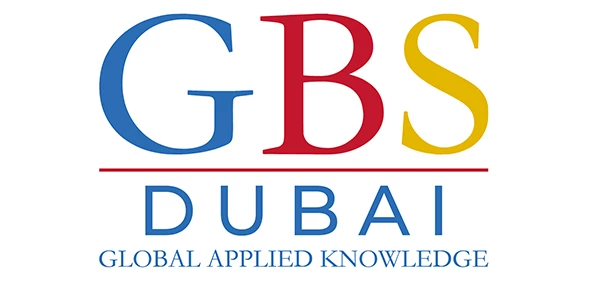Behind the buzz of the Internet of Things (IoT) lies a complex web of technologies, protocols, and architectures that enable devices to communicate, interact, and exchange data. To truly understand the power and potential of IoT, it's essential to grasp the technical foundation that underpins it. In this section, let us peel back the layers to reveal the inner workings of IoT, exploring the key technologies, protocols and architectures that make it all possible.
1. The building blocks of IoT:
To understand how the Internet of Things (IoT) works, it is essential to delve into its key components:
|
Sensors
|
Temperature Sensors
|
|
These devices are the eyes and ears of the Internet of Things (IoT). They collect data about the physical environment, converting real-world phenomena into digital signals.
|
Measure temperature and are used in applications like smart thermostats, industrial process control and food storage.
|
|
Motion Sensors
|
GPS Sensors
|
|
Detect motion and are used in security systems, home automation and traffic monitoring.
|
Track location and are used in navigation systems, fleet management and asset tracking.
|
|
Communication Protocols
|
Platforms and Operating Systems
|
|
These are the languages that allow devices to "talk" to each other. Some common protocols include:
- Bluetooth: Used for short-range communication between devices, like connecting your phone to a wireless speaker.
- Wi-Fi: Used for connecting devices to the internet over a wireless network.
- Cellular Networks: Used for long-range communication, enabling devices to connect to the internet even when they are not near a Wi-Fi network.
|
These provide a framework for managing and controlling IoT devices. Some popular platforms include:
- Amazon Web Services (AWS): Offers a comprehensive suite of cloud-based services for IoT applications.
- Microsoft Azure: Provides a cloud platform for building and deploying IoT solutions.
- Google Cloud Platform (GCP): Offers cloud services specifically tailored for IoT development.
|
2. Data, Data Everywhere: The Heart of IoT:
Data is the lifeblood of the Internet of Things (IoT). Sensors collect massive amounts of data, which is then processed, analysed and used to make informed decisions.
|
Data collection
|
Sensors capture data in real-time, measuring various parameters like temperature, humidity, pressure and location.
|
|
Data processing
|
Collected data is often transmitted to cloud platforms or edge devices for processing and analysis.
|
|
Data analysis
|
Machine learning algorithms are used to analyse large datasets, identify patterns and make predictions.
|
|
Data action
|
Processed data is used to trigger actions, such as adjusting a thermostat, sending an alert, or optimising a manufacturing process.
|
3. Cloud Computing and Big Data:
Cloud computing plays a crucial role in enabling the Internet of Things (IoT). Cloud platforms provide scalable storage, processing power, and data analytics capabilities, handling the immense volumes of data generated by connected devices. This allows businesses to leverage the power of Big Data, analysing vast datasets to gain insights and make data-driven decisions.
The connection between Internet of Things (IoT) and Artificial Intelligence (AI)
The Internet of Things (IoT) and Artificial Intelligence (AI) are two technologies that are revolutionizing the world in tandem. While IoT generates an unprecedented amount of data from connected devices, AI provides the intelligence to make sense of this data, uncover patterns, and drive insights. The connection between IoT and AI is more than just a coincidence - it's a symbiotic relationship that amplifies the potential of both technologies. As we explore the intersection of IoT and AI, we will uncover the exciting possibilities that emerge when these two technologies converge.
1. A powerful partnership:
The Internet of Things (IoT) and Artificial Intelligence (AI) are a powerful pairing, revolutionising various industries and creating new possibilities.
|
AI enhances IoT capabilities
|
AI-powered automation
|
Predictive analytics
|
|
AI algorithms can analyse the vast amounts of data generated by IoT devices, enabling intelligent decision-making, automation, and personalised experiences.
|
AI can automate tasks based on real-time data from IoT devices, improving efficiency and reducing human intervention. For example, in a factory setting, AI-powered systems can predict equipment failures, schedule maintenance, and optimise production processes based on sensor data.
|
AI can analyse historical data from IoT devices to identify patterns and predict future outcomes. This allows businesses to anticipate problems, make informed decisions, and optimise operations.
|
Also Read: Study artificial intelligence course in Dubai to boost your AI career
2. Examples of AI-Powered IoT Applications:
Here are some real-world examples of how AI is transforming IoT applications:
|
Predictive Maintenance
|
Personalised Healthcare
|
Smart Traffic Management
|
|
In factories, AI algorithms can analyse sensor data from machines to predict potential failures, allowing maintenance to be scheduled proactively, minimising downtime, and improving operational efficiency.
|
Wearable devices and smart medical devices collect data on patient health, which is analysed by AI algorithms to provide customised care plans, early disease detection, and medication management.
|
Sensors embedded in traffic lights, road surfaces, and vehicles can collect real-time traffic data, which AI algorithms can analyse to optimise traffic flow, reduce congestion, and improve safety.
|
Why study the Internet of Things (IoT)?

The Internet of Things (IoT) is transforming the way we live, work, and interact with the world around us, and its impact is only just beginning to be felt. As the number of connected devices continues to skyrocket, IoT is poised to revolutionise industries, create new business models, and improve the lives of individuals and communities. But to fully harness the potential of IoT, we need to understand its underlying principles, technologies, and applications. Studying the Internet of Things is essential for anyone looking to stay ahead of the curve in this rapidly evolving landscape. By delving into the world of IoT, you will gain a deeper understanding of the opportunities and challenges it presents, and be better equipped to develop innovative solutions, drive business growth, and shape the future of this transformative technology.
1. A future-proofed career path:
The Internet of Things (IoT) is rapidly expanding, creating a high demand for skilled professionals in various sectors. A career in IoT offers exciting opportunities for growth and innovation.
a) Growing demand: As more devices become connected, the need for experts in IoT development, data analysis, and security is increasing.
b) Diverse career opportunities: A career in IoT can lead to various roles in different industries, including:
- IoT Developer: Design, develop and deploy IoT applications.
- IoT Data Analyst: Analyse data from IoT devices to extract insights and make informed decisions.
- IoT Security Engineer: Ensure the security of IoT networks and devices.
- IoT Project Manager: Lead and manage IoT projects from conception to deployment.
2. GBS Dubai's HND in Digital Technologies (Artificial Intelligence (AI) Solutions and Applications):
If you are interested in pursuing a career in AI and the Internet of Things (IoT), GBS Dubai's HND in Digital Technologies (Artificial Intelligence (AI) Solutions and Applications) programme is an excellent choice. This programme provides a comprehensive foundation in AI, covering core concepts and practical applications, and includes a dedicated "Internet of Things" module.
This Internet of Things module will equip you with the technical knowledge and hands-on skills to design, develop and deploy IoT solutions.
Get involved with IoT and the future

The Internet of Things (IoT) is a transformative technology that is reshaping our world, creating a more connected and intelligent environment. AI is playing a crucial role in harnessing the power of the Internet of Things (IoT), driving automation, improving efficiency and unlocking new possibilities.
By studying the HND in Digital Technologies (Artificial Intelligence (AI) Solutions and Applications) programme at GBS Dubai, you can gain valuable skills and knowledge, opening doors to exciting and rewarding career opportunities in a rapidly growing field of the Internet of Things (IoT).
Contact us today and start your journey toward a future-proof career!
Also Read: Artificial Intelligence Trends & Predictions for the Next Decade




